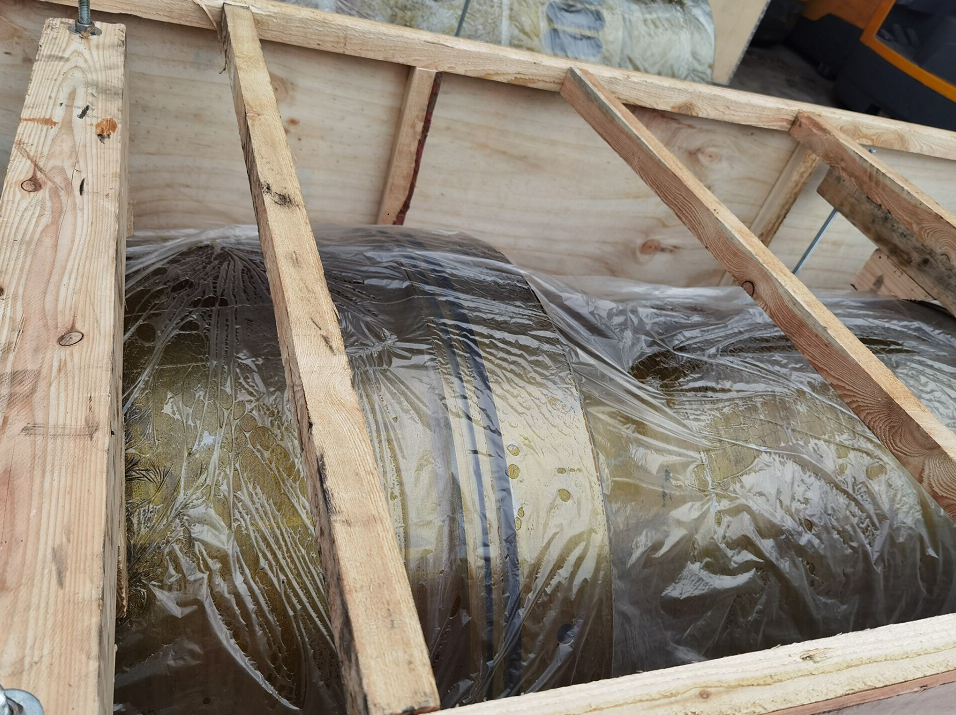Foreword: The cylinder liner is the heart part of the engine. Its inner surface, together with the top of the piston, the piston ring, and the bottom surface of the cylinder head, constitute the combustion chamber of the engine, and guide the reciprocating linear motion of the piston. The inner surface of the cylinder is both an assembly surface and a working surface, and the quality of its processing directly affects the assembly performance and service performance of the engine.
Before February 2008, the following problems existed in China's domestic marine marine engine cylinder liners:
① The processing level of China's domestic industry is low, the inner wall of the cylinder liner is made of ordinary honing mesh, the lubrication and friction reduction effect is poor, the service life of the cylinder liner is short, the engine energy consumption is high, and the emission exceeds the standard;
②The working temperature of the combustion chamber is above 1000 ℃ during the working process of the engine, and the fusing wear is very easy to produce carbon deposits, resulting in abrasive wear. It reduces the maintenance cost of the very expensive marine engine cylinder liner;
③ Before February 2008, most of the cylinder liners of marine marine engines were made of high phosphorus cast iron, boron cast iron, vanadium titanium cast iron, low alloy cast iron, etc. Although some alloying elements were also used in the formula, the comprehensive mechanical properties of the material Low strength and hardness, poor wear resistance, short product life, difficult to meet the needs of marine marine engines; Good performance, high precision and low vibration, the existing cylinder liner material before February 2008 can not fully meet the requirements.

two types of marine liner: dry liner and wet liner
1. Dry cylinder liner means that the surface of the cylinder liner does not touch the coolant. In order to ensure the heat dissipation effect and the positioning of the cylinder liner, and obtain enough actual contact area with the cylinder block, the surface of the dry cylinder liner and the inner and outer surfaces of the cylinder block bearing hole that cooperate with it have high machining accuracy. Dry cylinder liners have thin walls and some are only 1mm thick. The lower end of the outer circle of the dry cylinder liner has a small taper angle to press the cylinder block. The top of the dry liner (or the bottom of the cylinder bore) is available with or without flanges. Flanged has less interference because the flange assists in its positioning.
The advantages of dry cylinder liner are that it is not easy to leak, the rigidity of the cylinder structure is large, the mass of the body is small, there is no cavitation, and the distance between the cylinder centers is small; the defects are inconvenient to repair and replace, and poor heat dissipation. In engines with a bore diameter less than 120mm, it is widely used due to its small thermal load. Oil-free air compressor cylinder liner manufacturers believe that it is worth mentioning that the dry cylinder liner of foreign automotive diesel engines is developing rapidly.
2. The surface of the wet cylinder liner is directly in contact with the coolant, and its wall thickness is thicker than that of the dry cylinder liner. The radial positioning of the wet cylinder liner generally relies on the upper and lower two protruding annular belts that cooperate with the gap between the cylinder block, and the axial positioning is to use the lower plane of the upper flange. The lower part of the cylinder liner is sealed by 1 to 3 heat-resistant and oil-resistant rubber sealing rings. With the increasing degree of strengthening of diesel engines, the cavitation of wet cylinder liners has become a prominent problem, so some diesel engine cylinder liners have three sealing rings, and the upper part of the last one is in contact with the coolant, which can not only avoid the rusting of the working surface, It is easy to disassemble and assemble, and it can absorb vibration and reduce cavitation. Some upper and middle two are made of ethylene-propylene synthetic rubber to seal the coolant; the lower one is made of silicone material to seal the oil, and the two cannot be installed wrong. Some also put the sealing ring on the cylinder to improve the rigidity of the cylinder liner. The upper part of the cylinder liner is generally sealed by a metal sheet on the lower plane of the flange (copper or aluminum gasket, aluminum gasket is used for aluminum alloy cylinder body, copper gasket is not allowed to avoid electrochemical corrosion).
